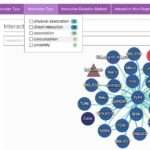
Introducing Data Science to Undergraduate Students: A Practical Approach Using Bioinformatics
October 11, 2024To provide undergraduate students with a deeper understanding of how data science can be integrated with bioinformatics, it is essential to expand on key areas that enhance both engagement and learning. The practicum designed by Bartlett et al. presents a model for how such integration can be achieved, but further elaboration is needed on specific components, strategies, and subtopics that were central to the seminar. This section dives into the detailed methodologies, educational tools, and theoretical underpinnings used to introduce data science to undergraduates, as well as how these approaches can be refined for future iterations.
1. The Role of Inquiry-Based Learning in Data Science Education
The shift from traditional passive learning to inquiry-based learning is pivotal in teaching data science to undergraduates. Inquiry-based learning encourages students to engage directly with the material, formulating their own research questions and hypotheses, which they then explore using bioinformatics tools. This approach is particularly beneficial when teaching complex subjects such as data science, as it allows students to develop problem-solving skills while gaining hands-on experience with real-world datasets.
In the practicum described in the document, students were introduced to bioinformatics tools like R through inquiry-based labs. These labs were designed to help students transition from theoretical understanding to practical application. For example, one lab tasked students with analyzing biological sequence data using R, guiding them to make inferences about gene expression patterns or evolutionary relationships. By engaging in these exercises, students not only learned to use data science tools but also began to appreciate their relevance in answering biological questions
2. Teaching Programming Skills through R and Other Tools
Introducing students to programming languages like R is essential for teaching data science in bioinformatics. The seminar focused on R as the primary language due to its widespread use in bioinformatics research. However, learning to code can be intimidating for students, especially those from non-computational backgrounds. To ease this transition, the practicum employed a stepwise approach that combined guided learning with opportunities for independent exploration.
Pre-made R markdown documents provided a structured framework for students to begin their coding journey. These documents included templates that students could modify to perform their own analyses, thus building their confidence in writing and executing code. Over time, students were encouraged to create their own R scripts from scratch, applying what they had learned in increasingly complex scenarios
By the end of the seminar, students had developed a solid foundation in R, which they could apply to a wide range of bioinformatics tasks, such as sequence alignment, data visualization, and statistical modeling. Additionally, the seminar introduced students to alternative bioinformatics tools such as MEGA for phylogenetic analysis, further broadening their computational skill set.
3. Building Research Independence through Group Projects
One of the practicum’s most innovative features was its emphasis on independent research through group projects. By working together to design bioinformatic studies, students were able to apply their data science skills in a collaborative setting. These projects served as a capstone experience, allowing students to integrate the various skills they had learned throughout the seminar.
Group projects encouraged peer-to-peer learning, where students could share their strengths and help one another overcome challenges. This collaborative approach not only enhanced their understanding of bioinformatics concepts but also mirrored the teamwork often required in scientific research. Each group was tasked with designing a bioinformatics study, selecting appropriate tools, and analyzing a dataset of their choosing. The culmination of these efforts was a final presentation where students showcased their findings, demonstrating both their data science skills and their ability to conduct independent research
However, the practicum also highlighted areas for improvement, particularly in managing group sizes and ensuring equal participation. Feedback from students indicated that smaller groups might offer more hands-on experience with bioinformatics tools, and future iterations of the seminar could benefit from limiting group sizes to ensure that all students are equally engaged in the research process.
4. Ethical Considerations in Data Science and Bioinformatics
As biological data becomes increasingly complex and personal, it is crucial to address the ethical implications of bioinformatics research. The seminar incorporated discussions on genomic privacy, data ownership, and the ethical use of data science tools. These discussions helped students understand the broader societal impacts of their research and emphasized the importance of responsible data handling.
Students explored topics such as the privacy concerns surrounding human genetics research, algorithmic bias in data analysis, and the ethical responsibilities of scientists working with sensitive data. By engaging in peer discussions on these topics, students developed a more nuanced understanding of the ethical challenges they may encounter in their future careers. The integration of ethics into the curriculum ensured that students not only gained technical proficiency but also a strong ethical foundation, preparing them to navigate the complex moral landscape of modern bioinformatics research
5. Challenges and Recommendations for Future Seminars
While the practicum successfully introduced students to data science and bioinformatics, it also revealed several challenges that must be addressed in future iterations. One of the main challenges was balancing the technical demands of learning programming with the need to explore biological concepts. Students with limited programming experience found the learning curve steep, particularly when working with tools like R. To mitigate this, the seminar could introduce more scaffolded learning modules, beginning with basic coding exercises before moving on to more complex analyses.
Another challenge was ensuring that students from diverse academic backgrounds felt equally prepared to participate in the seminar. The practicum included students from various majors, such as biology, chemistry, and engineering, each with different levels of experience in computational methods. Future seminars could offer additional support for students with less computational experience, such as optional pre-seminar workshops or supplementary online tutorials.
Finally, group projects were a highlight of the practicum, but student feedback suggested that smaller group sizes might improve the learning experience. By reducing group sizes, future seminars could ensure that each student has more opportunities to engage directly with the data and bioinformatics tools.
6. The Role of Data Science in Bioinformatics: Future Directions
The practicum described by Bartlett et al. represents a model for how data science can be integrated into undergraduate bioinformatics education. As the field of bioinformatics continues to evolve, it is likely that data science will play an even greater role in shaping biological research. The ability to manage, analyze, and interpret large datasets will be essential for future biologists, and the integration of data science into undergraduate curricula will ensure that students are prepared for the challenges ahead.
Future directions for integrating data science into bioinformatics education could include the incorporation of more advanced machine learning techniques, real-time data analysis, and cloud computing platforms. As new technologies emerge, it will be essential to update curricula to reflect these advances, ensuring that students are equipped with the latest tools and methodologies.
Moreover, as the volume of biological data continues to grow, the importance of ethical considerations in data science and bioinformatics will only increase. Future seminars should continue to emphasize the ethical responsibilities of scientists working with sensitive data, preparing students to navigate the complex moral and legal issues that arise in modern bioinformatics research.
Conclusion
Introducing data science to undergraduate students through bioinformatics provides a unique opportunity to equip the next generation of scientists with the skills they need to succeed in an increasingly data-driven world. The practicum described in this document highlights the importance of active learning, independent research, and ethical considerations in building students’ confidence and competence in data science.
By integrating computational tools like R with bioinformatics concepts, the seminar helped students gain practical experience with the types of analyses they will encounter in their future careers. The success of this practicum demonstrates the value of combining theoretical instruction with hands-on research, and future iterations of the seminar will continue to refine this approach, ensuring that students are prepared for the challenges of modern biological research. As the fields of data science and bioinformatics continue to converge, undergraduate education must evolve to keep pace, providing students with the tools they need to explore the vast and complex world of biological data.

















